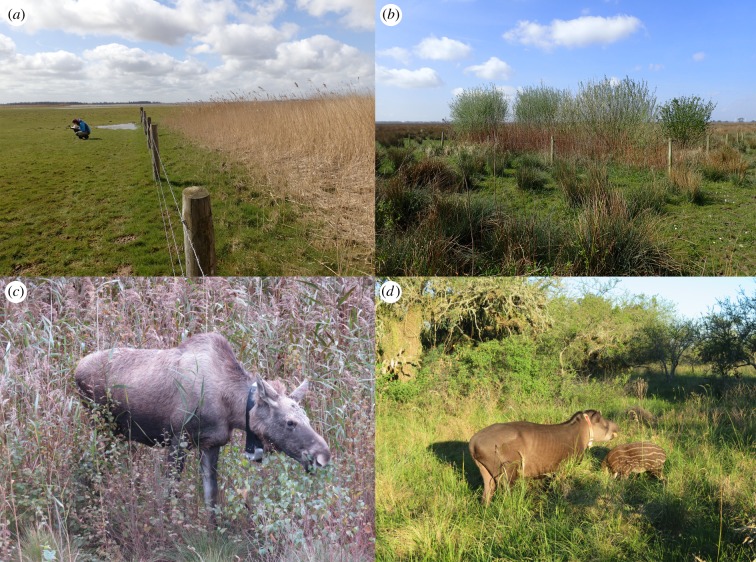Figure 1.
Examples of how to collect data in trophic rewilding research. (a,b) Using exclosures to study the impact of the presence of large herbivores in rewilding projects. (a) Exclosure in the Lauwersmeer, The Netherlands, where Konik horses and bovids are used as proxies for extinct native horses and bovids and maintain short lawn grasses, whereas upon exclusion of the large herbivores inside the exclosure a tall wetland reed (Phragmites australis) vegetation emerges. (b) Exclosure on the island of Tiengemeten, The Netherlands, where Scottish highland cattle prevent the encroachment of woody plants; inside the exclosure willow species have established. (c,d) Using collars to track animal movement and quantify areas used with high and low intensity. (c) Eurasian elk (Alces alces) in a rewilding project in the largest raised bog area in Denmark, Lille Vildmose (Little Wild Bog). (d) Tapir (Tapirus terrestris) with young from the Iberá Rewilding Program, Argentina [64]. Photo credits: (a,b) E.S.B and (c,d) J.-C.S. (Online version in colour.)

